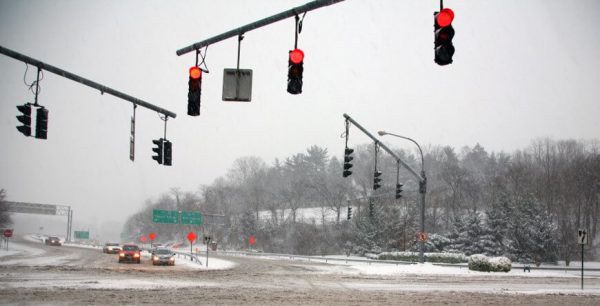How to Be Extra Careful
Slippery, snowy, and other conditions unique to the winter months greatly increase the chances of finding yourself in a fender bender or worse. The defensive driving course NY will decrease your insurance premium in New York even if you’re never in an accident and will pay dividends if you are unlucky enough to trade paint with another car.
As for the Big Apple, there’s one tip that applies to both long-time New Yorkers and tourists alike regarding driving in the city: don’t do it. Seemingly every block in the city presents a virtual defensive driving course’s worth of challenges: speeding bikes, annoying scooters, skateboarders for some reason, pedestrians in crosswalks, pedestrians everywhere else, and endless streams of cars and trucks of every type from semis to the ubiquitous yellow cabs that are still holding the line in the age of Uber; all of them are everywhere at the same time. So, if possible, leave your car outside the city and take a train or ferry into the thick of it; you can take a subway, cab, or Uber anywhere you might want to go.
For Those Who Can’t Give Up Driving
If you insist on driving in the city, there are several tips to remember, some of which are unique to NYC.
1. Right Turns. First, unlike almost everywhere else in the United States, you can’t turn right on red in the city unless there’s an arrow or sign indicating otherwise. It’s also very common for left turns to be prohibited at many intersections for much of the day as indicated by clear signage. If you’re not familiar with the city, don’t let the fact that the city’s a giant, easy to follow grid fool you; know your route before you start driving because you won’t have time to check you phone on the way.
2. Parking. As you can imagine, parking can be a problem. If you find a coveted street spot within a half mile of your destination, jump on it unless you see an entire block with no cars parked on it. That doesn’t just happen; if there are no cars parked on a whole block, there is a reason like street cleaning that will get your car towed quickly.
3. Crosswalks. Your car needs to be completely outside all crosswalks and at least 15 feet from every fire hydrant. Parking tickets are a major source of revenue for the city and parking enforcement is out in force 24/7; expect to pick up a ticket at 2AM the same as you would for parking illegally in the middle of the day. If your car gets towed, it’s entirely possible it will end up in a different borough at a garage that is open for pickups 4 hours a day and charges $100 a day for ‘storage.’
4. GARAGE. Given all of that, it’s probably wise to head straight for a paid lot or garage. Don’t be fooled by lots with suspiciously low rates. It’s not uncommon for a parking lot or garage to have a sign that says “$5 all day” in large letters with “…for every half hour” in tiny letters underneath.

 Live Chat
Live Chat






